Nijverdaller keeps brand alive
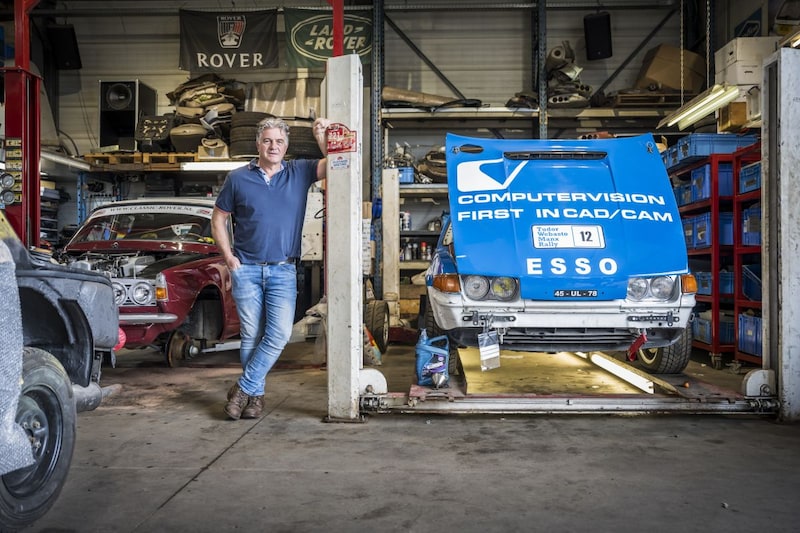
Rover was a high-end brand, but had insufficient appeal to please the discerning buyer. Cadillac, Infiniti, Lancia, Lincoln and Saab have also (almost) given up in Europe, with Saab even disappearing completely. A community keeps the Swedish brand alive, but this is much less the case with Rover. Fortunately we still have Johan Löwik.
Parents are often the cause of a certain brand love among their offspring. This also applies to Nijverdaller Johan Löwik. “My parents had an antique shop in the village. When my father went to Great Britain on a ‘raiding expedition’, he regularly brought an old car with him on his return, in addition to the usual antiques. From Austin to Rolls-Royce and Wolseley: I’ve seen them all. That changed in the 1970s. Then it was mainly Rovers who made the crossing: P2, P3, P4. My father’s daily car was a pre-war P2 16hp, so I kind of fell into it.” Rover was and is his brand, Johan admits. “I have experienced a large part of history. Rover was destroyed by strikes, unions and unreliable electronics. You should not forget that Rover has always been in need, but thanks to Land Rover it was able to stay on its feet.”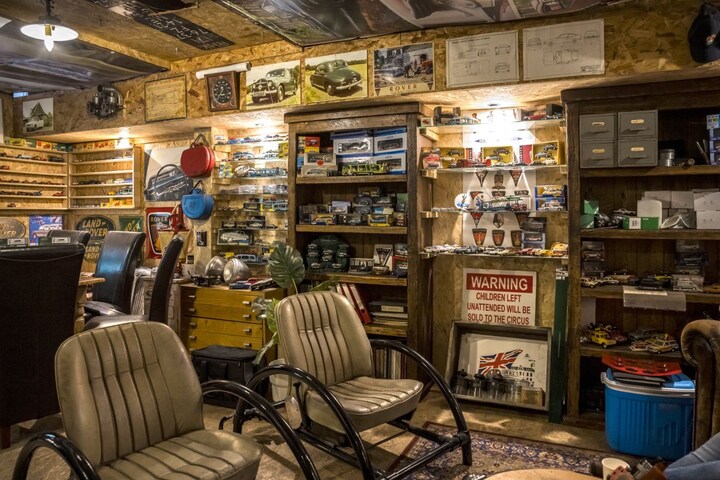
Robber’s Den: man cave full of Rover attributes
This is unmistakably someone speaking who knows all the ins and outs of the Viking ship brand, also mentioning the (unfortunately) lesser aspects. He does this in his ‘Den of Thieves’; a fully equipped, beautiful man cave that is full of all kinds of Rover attributes. For example, there are Chesterfields and chairs from the P6 (“They are replicas. Real copies, made by an American artist, easily cost 8,000 dollars per set”) around a glass table, of which the famous 3.5 V8 serves as a leg. That mighty eight-cylinder originally came from Buick, but the term ‘Rover 3500’ has become so established that only the faint-hearted would pay attention to it. The workshop is housed under Johan’s man cave, next to his machine factory on an industrial estate in Almelo. Here Johan prepares the fast guys for the better rally work, because he does not spare his cars at all. His favorite is the P6, which he has been racing on domestic and foreign roads and circuits for twelve years – from Goodwood to Eifel.
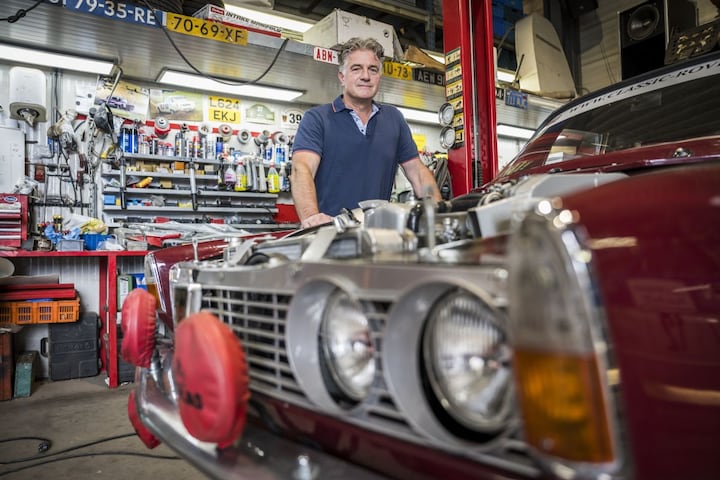
He once made his debut on the ‘normal’ road with another P6. Where other boys went for a sporty -02 or Alfasud, Johan drove around royally with a British V8. “Well, the beginning wasn’t so royal, you know. That P6 was the management car of the Ten Cate textile factory, which was taken over by the executive secretary after some work had been completed and ended up in a pig barn after some time. Besides the fact that the car smelled really bad, it was almost eaten by the ammonia. Fortunately, I bought the P6 when I was 17, so I had plenty of time to restore it.” In 1982 the time had come: with the Mexico Brown luxury sedan that Johan had acquired for a few hundred guilders and the pink paper on it. bag he made his first trip, only to be stopped at a police check after a few hundred meters. Fortunately everything was fine. What do you also want: as a Mechanical Engineering student at HTS, the welding and tinkering work did not cause too many headaches for Johan. Such a P6 is also easily constructed: loose sheet metal parts around a reinforced frame à la Citroën DS.
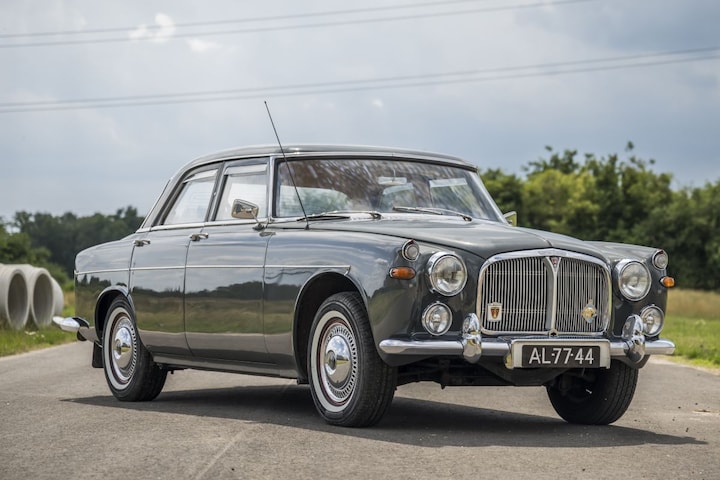
Rover P5
The center of gravity is Rover P6
From the 1980s onwards, Johan’s collection of Rovers grew rapidly. What he found, he bought if possible. Today his collection includes approximately seventy of those noble British, spread over several warehouses here and there in Twente. Recently there has been a shift towards pre-war models, just like with his father. The center of gravity was and remains the P6. “The V8 version in particular drives very well, it is fast and comfortable thanks to the soft suspension, reliable and safe because of the disc brakes all around: really a car that you can enjoy getting into and covering long distances,” sums up our host. up without any hiccups.

Rover P5.
The youngest Rover in the collection is a 75
The senior from the collection dates from 1928, the youngest is a modern, but experienced (because four tons on the clock) 75 1.8 automatic. “The 75 is the last truly stately Rover,” Johan muses. We don’t see that car today, nor the nestor, because as mentioned, the vast majority are parked elsewhere. What we do see are a few P6s that serve as donors, a beautiful P5 from Sweden and the rally Rovers. “The blue SD1 3500 we are currently working on is really fast with its 400 hp. I raced it at Goodwood last year and it was only a few seconds slower than Audi’s Ur-Quattros. The red P6, with its 150 hp, obtained by installing different pistons and carburetors, is slightly less powerful, but still a wonderful rally car.” He also inherited his rally driving skills from his father, while Johan’s brother drove rallies with a Opel Kadett Coupé. “It actually came naturally to me. More than fifteen years ago I just took a P6 and went to the KNAF with it. Unfortunately, obtaining homologation proved difficult, so I moved to Germany. Safety items such as a roll cage are also mandatory there, but the requirements for homologation are more lenient. Initially I drove about twelve rallies a year, but since the corona period I have been picking and choosing the best from the pie. I have already mentioned Goodwood and the Eifel Festival, but Historic Monte Carlo is also a great challenge.”
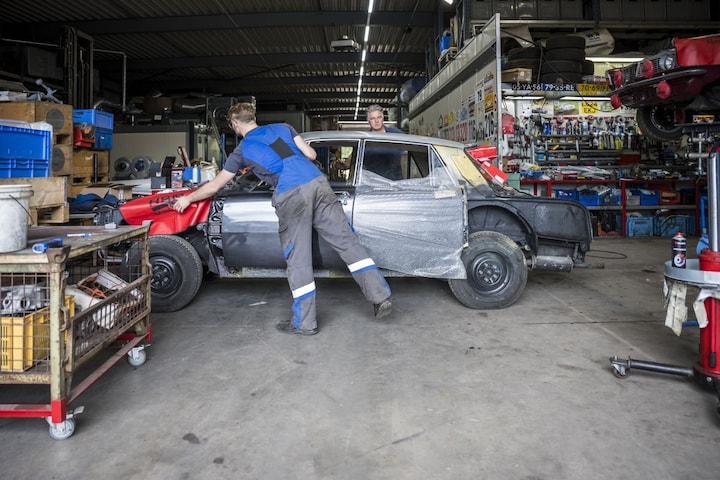
Johan is a well-known name in the Rover world
Due to those rally activities and his chairmanship of the Rover Owners’ Club Holland for eight years, Johan Löwik became a well-known name in the Rover world. Cars and parts are sometimes simply offered to him. The result is not only a beautiful cross-section of Rover history, it also contains countless parts for many models. Through www.classic-rover.nl Rover enthusiasts, owners and restorers make grateful use of this.
For someone who has apparently owned or at least seen everything from Rover, there is still something to be desired. During our photo report with the gray P5 3.0 MkI (1961), Johan tells one anecdote after another about this. “Yes, you then end up in the corner of the separate models. For example, a few months ago I was tipped off about the proposed demolition of an old beer brewery in Antwerp. The basement would contain a collection of vintage cars and classics from the former owner. I went there, and sure enough: a nice Rover 12 Tourer from 1947. It had been standing still for twenty years and is now mine. Also special is the Estate version of the P6. The conversion at the British bodybuilder Panelcraft cost £800 at the time, the same as the car itself. It is therefore not surprising that only seventy copies were produced. When the opportunity came to buy one, I didn’t hesitate and traveled to the north of Great Britain. On the way back alone I could have resold it ten times over, they are so rare and I had so much claim with them.”
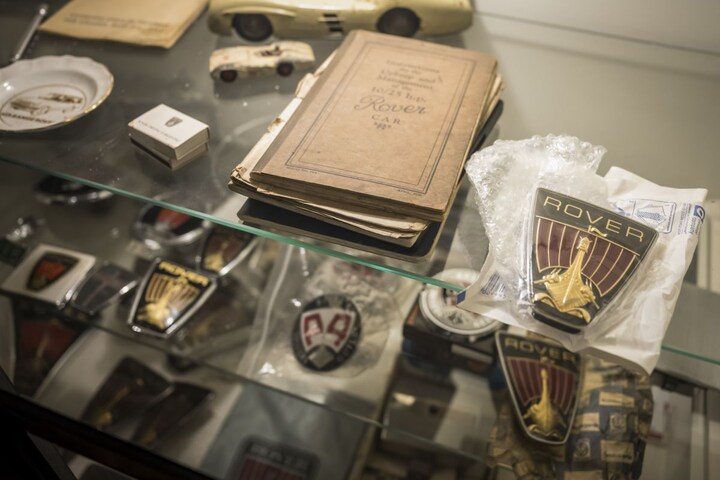
Better than Jaguar
Back in the workshop we admire a few old racers hidden under carpets (‘They still need to be restored’), we marvel at the many racks with thousands of parts and we enjoy the powerful rally Rovers. It is striking that we come across the brand name Lucas here and there, which is not the epitome of reliability. It is not without reason that the Lucas company is nicknamed ‘The Prince of Darkness’. However, appearances are deceiving. “Everything from Lucas has been banned from rally cars. You see the brand name to maintain authenticity, but the parts used are from Bosch or other suppliers,” Johan explains to us.
The fact is that he takes things seriously. “We regularly have about seven people here restoring or preparing cars. We have plenty of parts and what we miss is in stock in Great Britain. Moreover, a lot can be achieved with 3D printing these days. For example, everything may still be available for the P6 3500, but for the 2000 and the 2200TC it is a completely different story.”
Johan has few illusions about the value of his collection. “Because of all the problems I have already mentioned, Rover got a bad name. The brand is undervalued. Rovers will never reach the value that classic Jaguars have, while I think a Rover drives better.” Not only Johan thinks so, but also his children. In addition to the daily P6, Löwik House has a 25, a 620 and even an MG F; after all, it is equipped with a Rover engine.
The collection remains family property, that much is certain. However, it is also certain that none of his three descendants has ambitions to follow in his father’s rallying footsteps. Johan doesn’t mind that. “It remains a dangerous hobby, right? Because if you drive a classic Rover into a tree…,” it sounds ominous. “No, the way the Rover clock is ticking in our family now, it’s ticking fine. By saving Rovers, we try to ensure that the Viking ship does not sink into the dark depths of oblivion forever.”
– Thanks for information from Autoweek.nl